Study of Ignition Process in an Aero Engine Combustor Based on Droplet Evaporation Characteristics Analyses
Abstract
1. Introduction
2. Methods and Theories
2.1. Modeling and Meshing
2.2. Mesh Independence Analysis
2.3. Boundary Conditions and Numerical Methods
2.4. Validation of LES Mesh Compliance
2.5. Definition of New Concept and Parameters
2.5.1. Available Droplet
2.5.2. Available Equivalence Ratio
3. Results and Discussions
3.1. Validation of the Reliability of the Numerical Simulation
3.2. Pulsation Period
3.3. Ignition Process Simulated by LES
3.4. Ignition Process Analyses Based on Available Equivalence Ratio
3.5. Analyses of Available Droplet Characteristics
3.6. Analyses of Available Equivalence Ratio Characteristics
4. Conclusions
- (1)
- Flame propagation during ignition is closely related to the regions with high available equivalence ratios. In the early ignition stage, available droplets rapidly increase around the flame kernel, ensuring the development of the flame kernel. As ignition progresses, sufficient combustible gases, including kerosene vapor and CO, are gradually generated in the flame region to maintain the flame expansion and finally fill in the whole combustor to achieve stable combustion.
- (2)
- Most of the available droplets (about 89.2%) concentrate in the regions where the temperatures range from 650 K to 1200 K. Moreover, larger diameter available droplets (i.e., the diameter is larger than 40 μm) also only exist in the regions with this same temperature range. Apart from this temperature range, just a few of the available droplets exist.
- (3)
- The number percentage of available droplets increases approximately exponentially as the flame develops and eventually stabilizes at about 2.5%.
- (4)
- The volume percentage of flammable regions increases slowly at the early ignition stage and then increases rapidly at the flame self-sustain propagation stage and eventually stabilizes at about 10%.
- (5)
- The new concepts proposed in this paper (available droplet and available equivalence ratio) bridge the gap between droplet-scale evaporation and combustor-scale ignition dynamics, offering an analytical tool for optimizing ignition criteria in aero engine combustors. By analyzing the distributions and evolutions of available fuel rather than fuel vapor, this work can be utilized in design strategies for reliable ignition in extreme conditions.
Author Contributions
Funding
Data Availability Statement
Conflicts of Interest
Abbreviations
| LES | Large eddy simulation |
| RANS | Reynolds-Averaged Navier–Stokes simulation |
| DPM | Discrete phase model |
| EDM | Energy deposit model |
| CRZ | Corner recirculation zone |
| IRZ | Inner recirculation zone |
| FFT | Fast Fourier transport |
References
- Swithenbank, J. Combustion design fundamentals. In Symposium on Combustion; Elsevier: Amsterdam, The Netherlands, 1973; Volume 14. [Google Scholar]
- Esclapez, L.; Collin, B.F.; Riber, E. A statistical model to predict ignition probability. Combust. Flame 2021, 225, 180–195. [Google Scholar] [CrossRef]
- Jones, W.P.; Tyliszczak, A. Large eddy simulation of spark ignition in a gas turbine combustor. Flow Turbul. Combust. 2010, 85, 711–734. [Google Scholar] [CrossRef]
- Neophytou, A.; Richardson, E.S.; Mastorakos, E. Spark ignition of turbulent recirculating non-premixed gas and spray flames: A model for predicting ignition probability. Combust. Flame 2012, 159, 1503–1522. [Google Scholar] [CrossRef]
- Javier, M.S.; Felix, C.B.; Riber, E. On the mechanisms of flame kernel extinction or survival during aeronautical ignition sequences: Experimental and numerical analysis. Combust. Flame 2020, 222, 70–84. [Google Scholar]
- Palanti, L.; Andreini, A.; Facchini, B. Numerical prediction of the ignition probability of a lean spray burner. Int. J. Spray Combust. Dyn. 2021, 13, 96–109. [Google Scholar] [CrossRef]
- Liu, T.; Xiong, Y.; Zhao, D. Large eddy simulations of high-pressure rocket propellant# 3 aviation kerosene spay in pressurized quiescent environments. Energy Sources Part A Recovery Util. Environ. Eff. 2025, 47, 10380–10395. [Google Scholar]
- Tekgul, B.; Kahila, H.; Kaario, O.; Vuorinen, V. Large-eddy simulation of dual-fuel spray ignition at different ambient temperatures. Combust. Flame 2020, 215, 51–65. [Google Scholar] [CrossRef]
- Tang, Y.; Hassanaly, M.; Raman, V.; Sforzo, B.A.; Wei, S.; Seitzman, J.M. Simulation of gas turbine ignition using large eddy simulation approach. In Turbo Expo: Power for Land, Sea, and Air; American Society of Mechanical Aeroengineers: New York, NY, USA, 2018; Volume 51067, p. V04BT04A007. [Google Scholar]
- Dong, R.; Lei, Q.; Zhang, Q.; Fan, W. Dynamics of ignition kernel in a liquid-fueled gas turbine model combustor studied via time-resolved 3D measurements. Combust. Flame 2021, 232, 111566. [Google Scholar] [CrossRef]
- Wang, K.; Fan, X.; Liu, F. Experimental Studies on Fuel Spray Characteristics of Pressure-Swirl Atomizer and Air-Blast Atomizer. J. Therm. Sci. 2021, 30, 729–741. [Google Scholar] [CrossRef]
- Zhao, Q.; Yang, J.; Mu, Y.; Li, Y.; Liu, C.; Liu, F.; Xu, G. Experimental investigation of flow field features and spark ignition process in a multi-swirl air blast injector. Fuel 2021, 306, 121732. [Google Scholar] [CrossRef]
- Xia, Y.; Zheng, Y.; Zhao, D.; Ge, H.; Wang, G. Numerical Simulations of the ignition dynamics in an annular combustor. In Proceedings of the 13th World Congress on Computational Mechanics, New York, NY, USA, 22–27 July 2018. [Google Scholar]
- Machover, E.; Mastorakos, E. Experimental investigation on spark ignition of annular premixed combustors. Combust. Flame 2017, 178, 148–157. [Google Scholar] [CrossRef]
- Liu, S.; Zhao, N.; Zhang, J.; Yang, J.; Li, Z.; Zheng, H. Experimental and numerical investigations of plasma ignition characteristics in gas turbine combustors. Energies 2019, 12, 1511. [Google Scholar] [CrossRef]
- Hu, Q.; Wang, L. Turbulent spray combustion modeling in reduced tabulation parameter space by similarity map. Combust. Flame 2024, 270, 113749. [Google Scholar] [CrossRef]
- Yu, D.; Chen, Z. Premixed flame ignition: Theoretical development. Prog. Energy Combust. Sci. 2024, 104, 101174. [Google Scholar] [CrossRef]
- Huang, Y.; Lin, Y.; Fan, W. Combustion and Combustion Chamber; Beijing University of Aeronautics and Astronautics Press: Beijing, China, 2009; pp. 296–300. [Google Scholar]
- Rosa, N.G. Ignition Phenomena of a Turbomachine Combustor Under High-Altitude Conditions; ISAE: Toulouse, France, 2008. [Google Scholar]
- Franzelli, B.; Riber, E.; Sanjosé, M.; Poinsot, T. A two-step chemical scheme for kerosene–air premixed flames. Combust. Flame 2010, 157, 1364–1373. [Google Scholar] [CrossRef]
- Sun, L.; Zhang, H.; Wang, F.; Feng, R. Flow field near lean blowout in a single point lean direct injection combustor based on large eddy simulation. J. Propuls. Technol. 2025, 46, 2404017. (In Chinese) [Google Scholar]
- Zhang, B.; Wang, T.; Gu, C.; Dai, Z. A novel meshing approach for large eddy simulation. In Proceedings of the Fluids Engineering Division Summer Meeting, Montreal, QC, Canada, 1–5 August 2010; pp. 2527–2535. [Google Scholar]
- Werner, H.; Wengle, H. Large-eddy simulation of turbulent flow over and around a cube in a plate channel. In Turbulent Shear Flows 8: Selected Papers from the Eighth International Symposium on Turbulent Shear Flows, Munich, Germany, 9–11 September 1991; Springer: Berlin/Heidelberg, Germany, 1991; pp. 155–168. [Google Scholar]
- Rosa, N.G.; Linassier, G.; Lecourt, R.; Villedieu, P.; Lavergne, G. Experimental and numerical study of high-altitude ignition of a turbojet combustor. Heat Transf. Aeroengineering 2011, 32, 949–956. [Google Scholar] [CrossRef]
- Hervo, L.; Senoner, J.M.; Biancherin, A. Large-Eddy Simulation of Kerosene Spray Ignition in a Simplified Aeronautic Combustor. Flow Turbul. Combust. 2018, 101, 603–625. [Google Scholar] [CrossRef]
- Zabetakis, M.G. Flammability Characteristics of Combustible Gases and Vapors; Bureau of Mines: Pittsburgh, PA, USA, 1964.

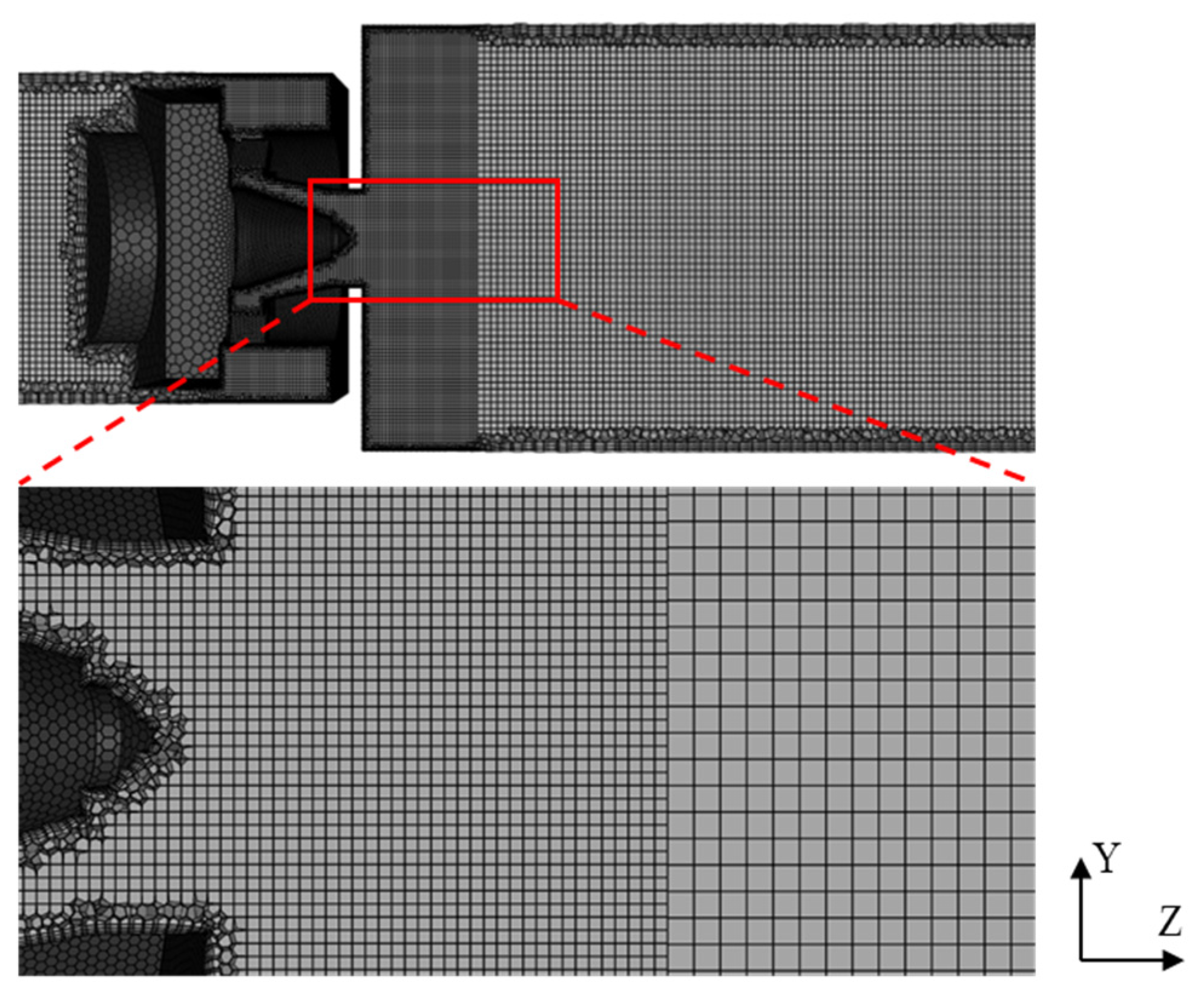


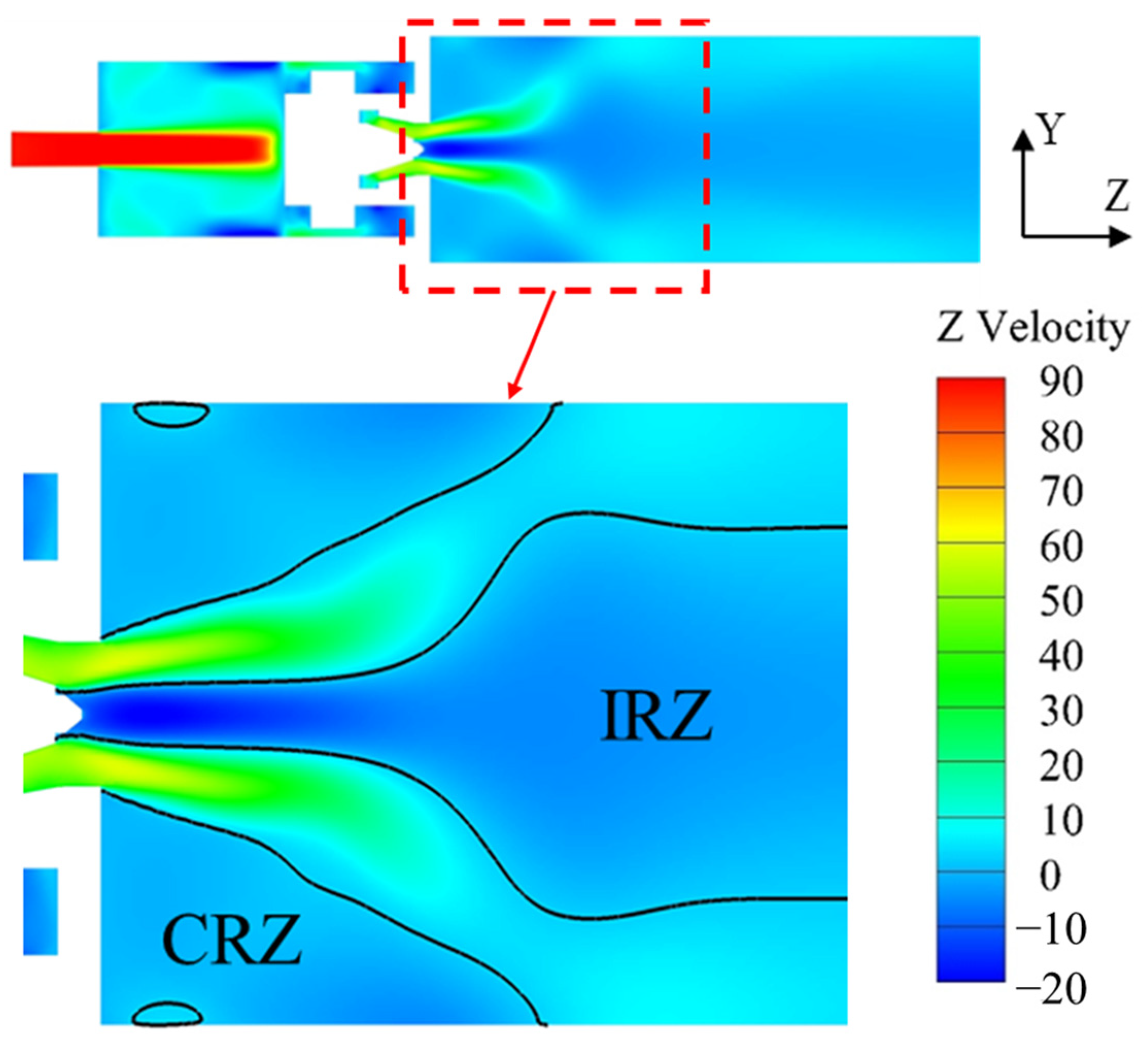
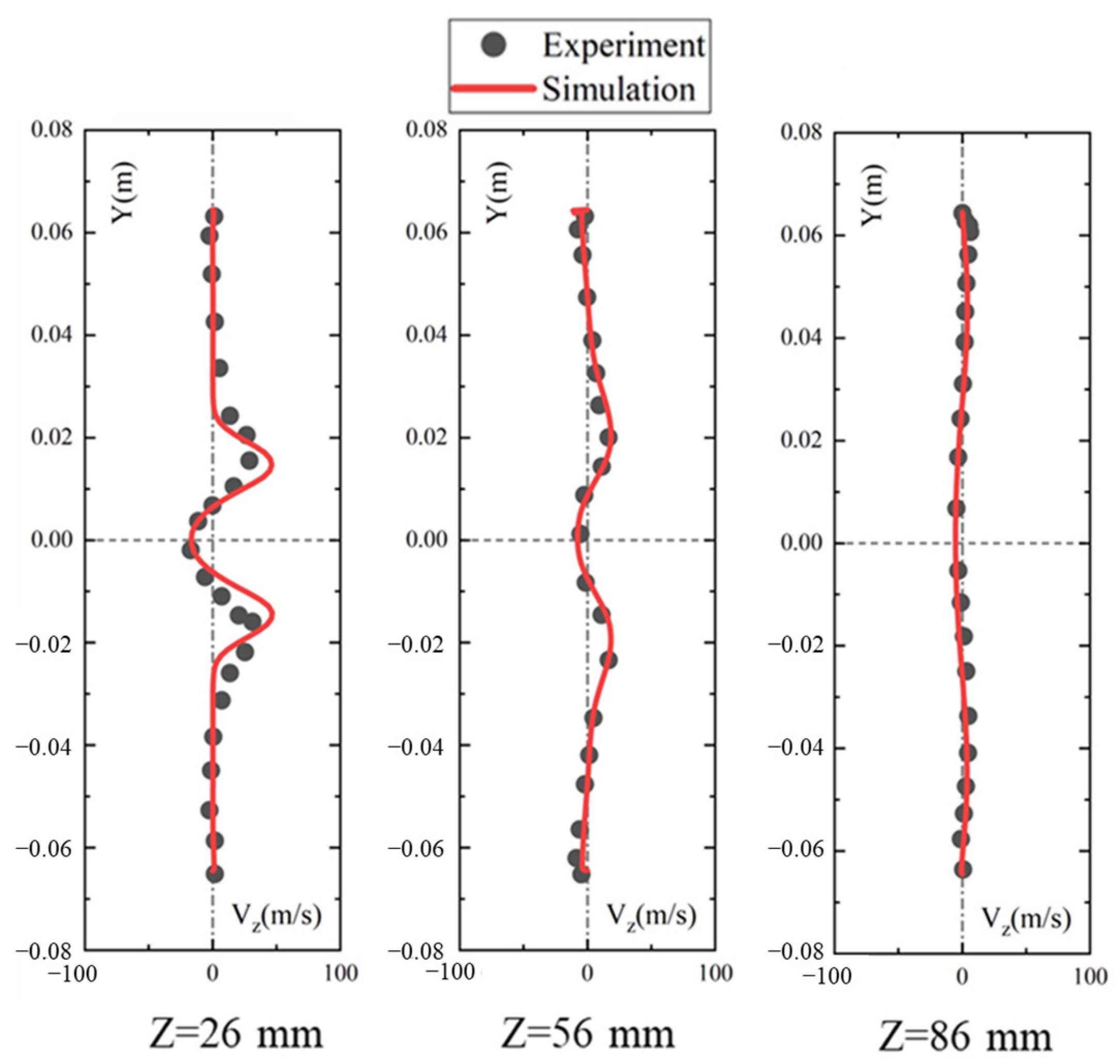
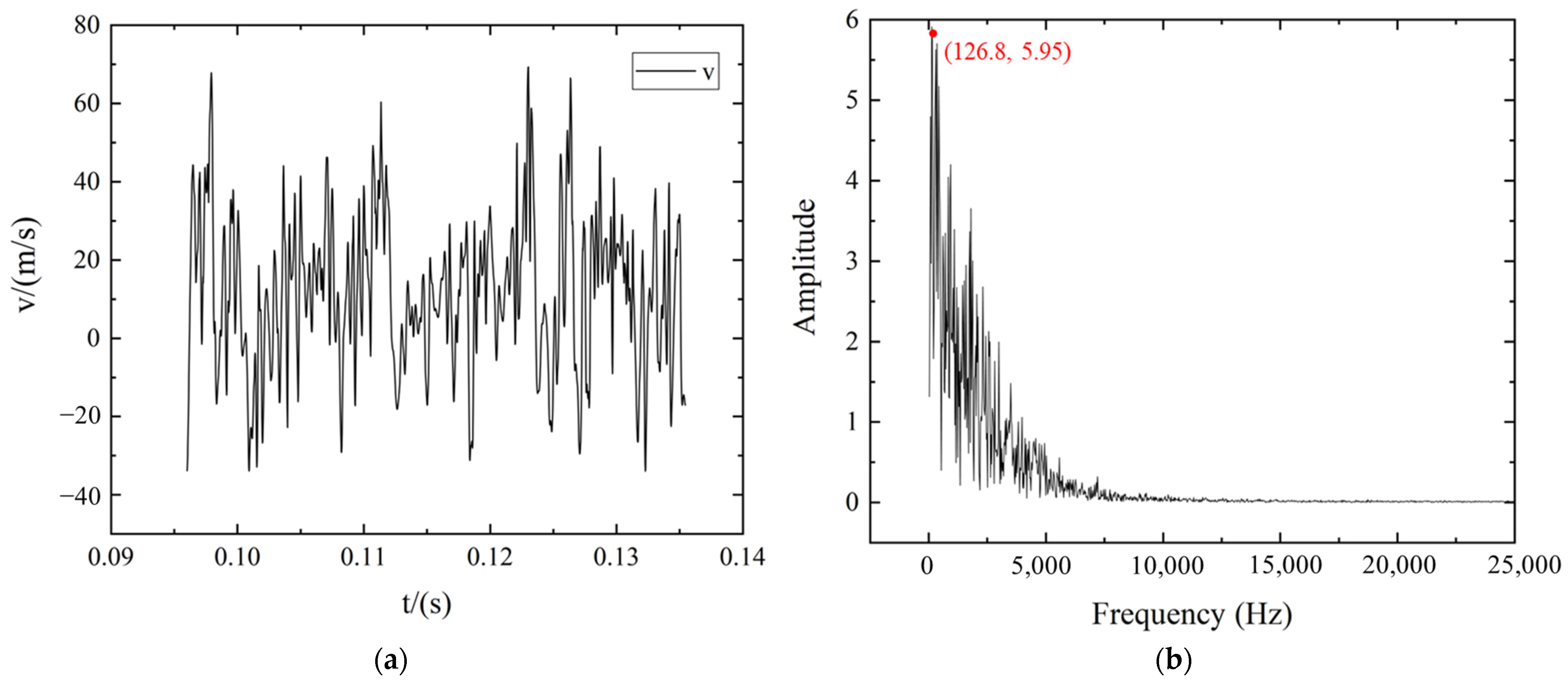
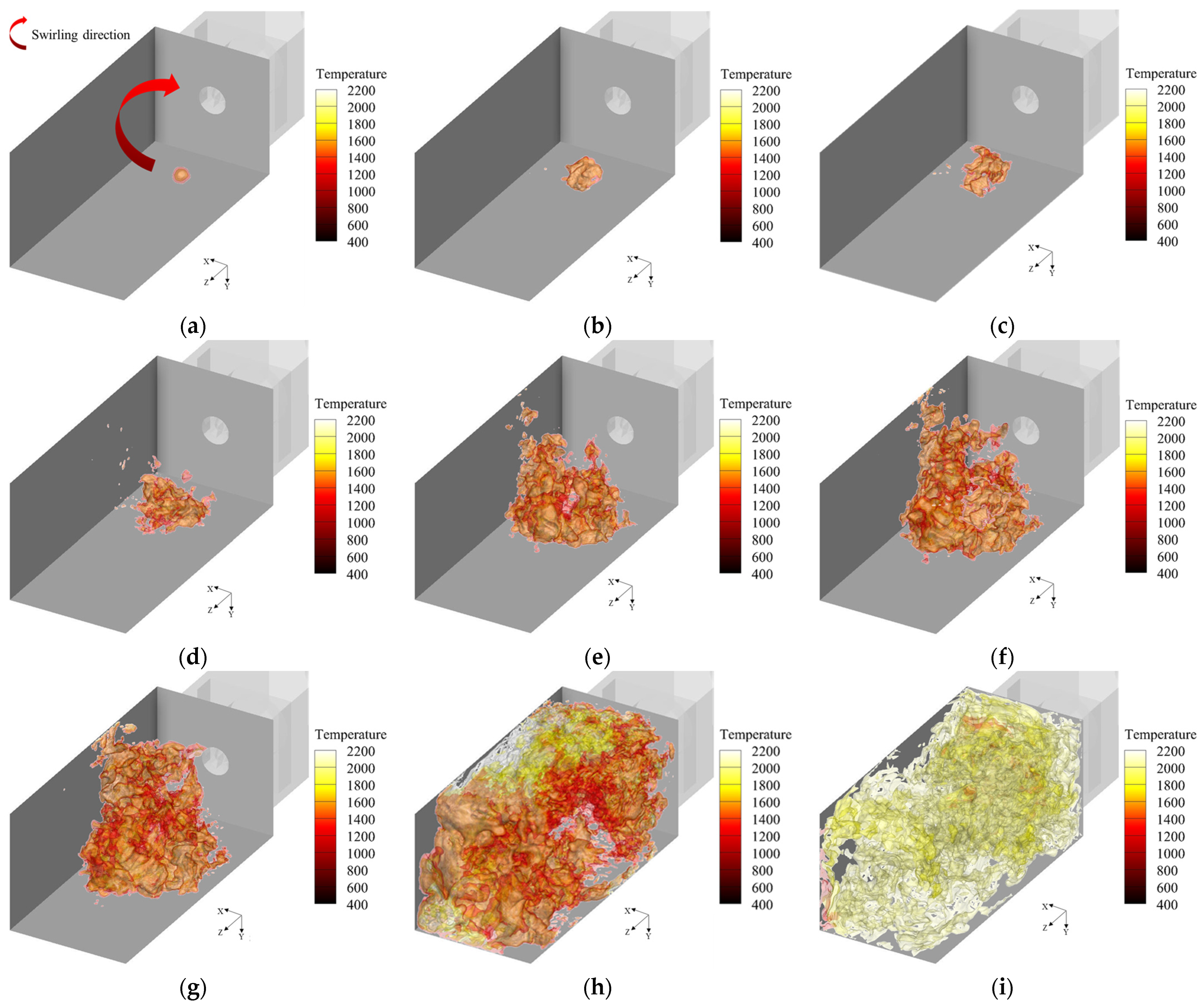



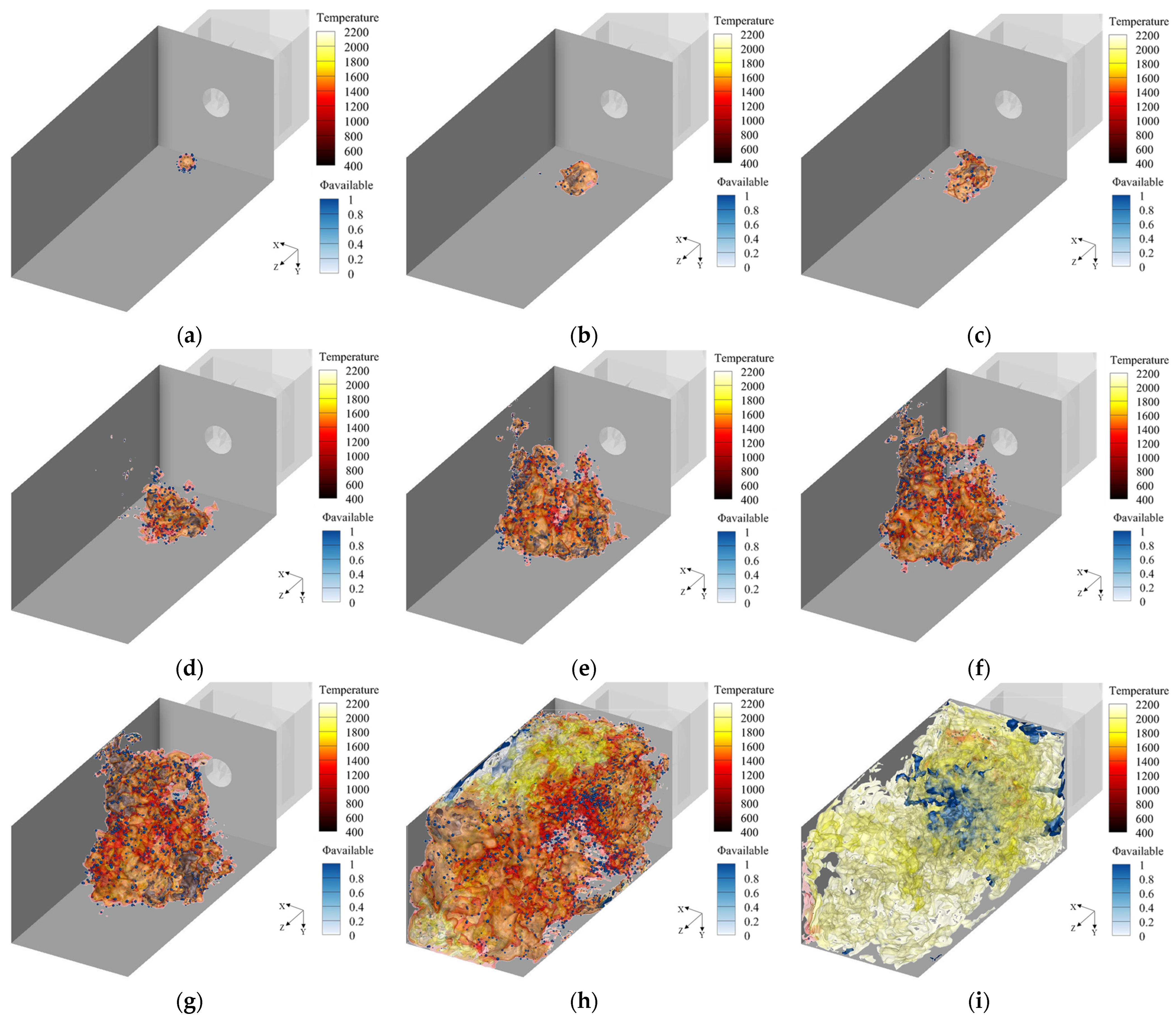
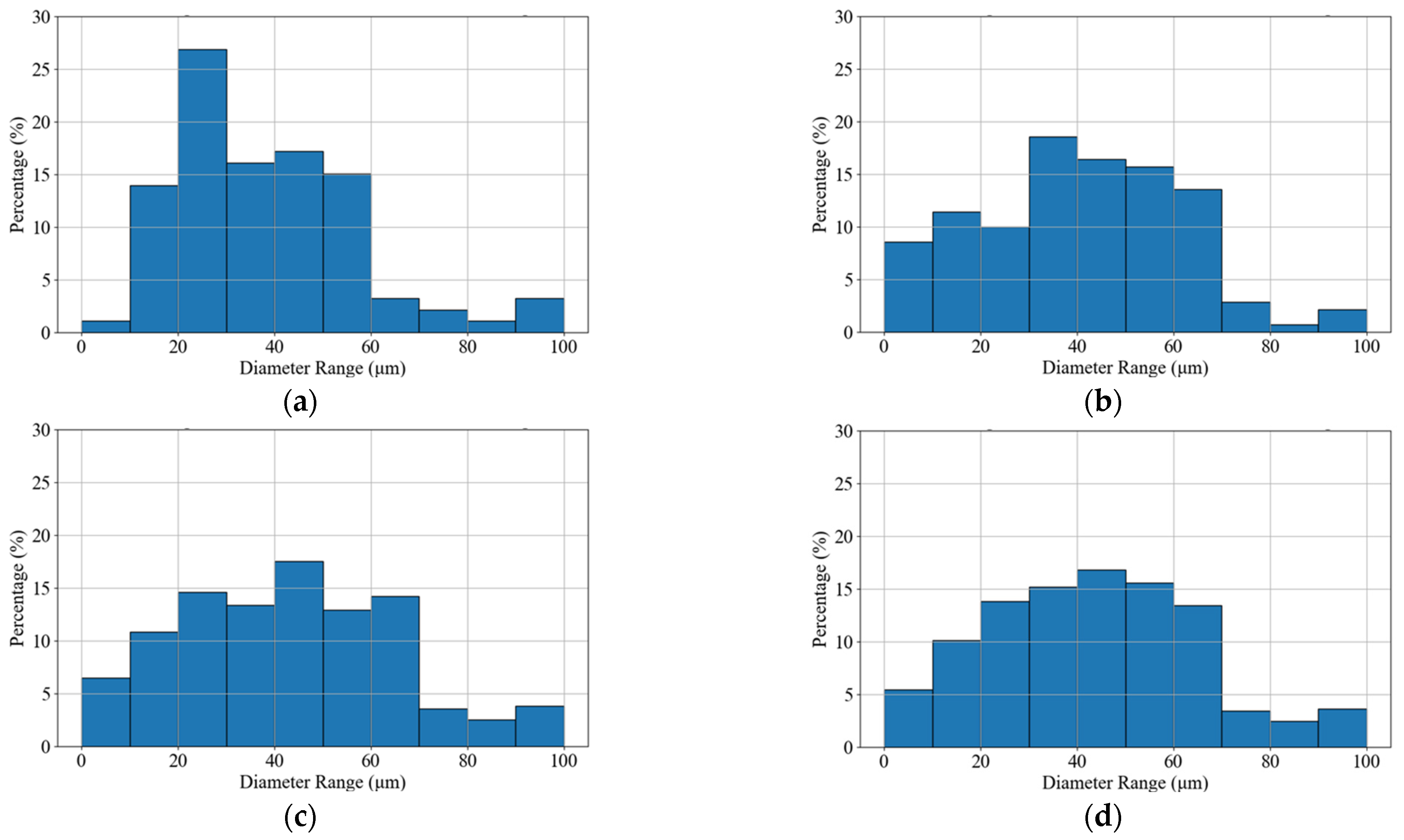

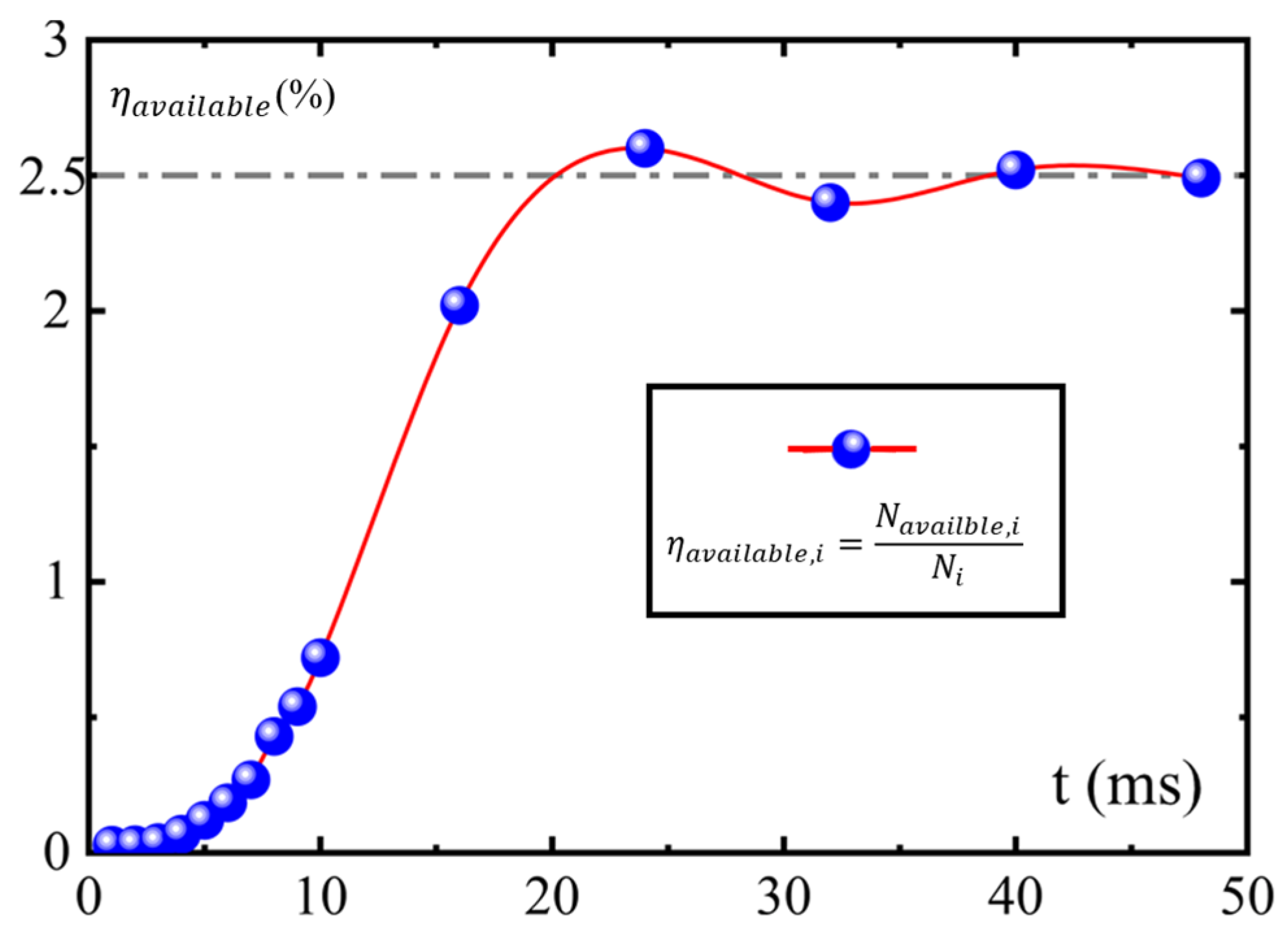
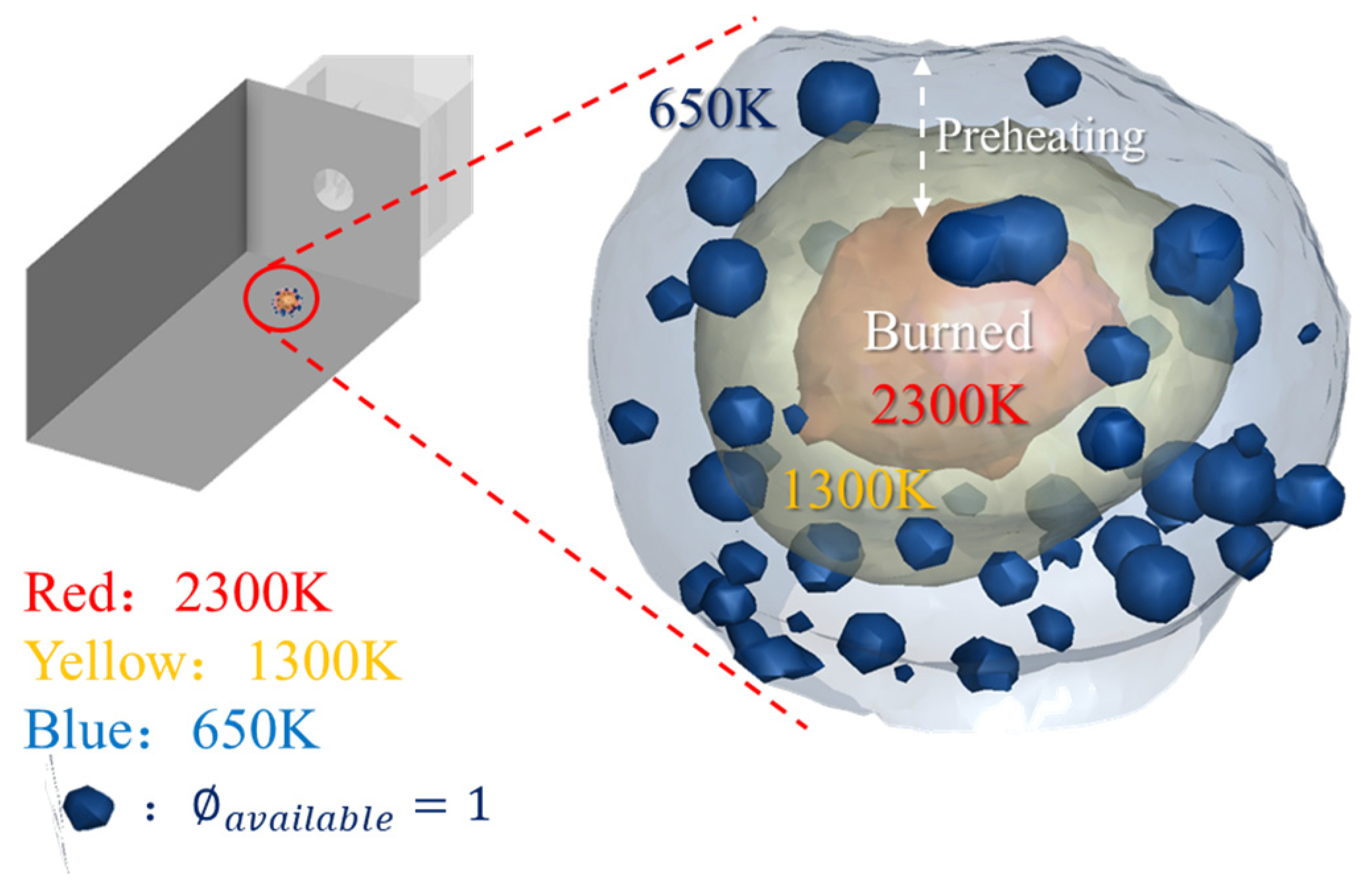

| Air Mass Flow (kg/s) | Fuel Mass Flow (kg/s) | Temperature (K) | Pressure (Pa) |
|---|---|---|---|
| 0.035 | 0.00225 | 300 | 101,325 |
Disclaimer/Publisher’s Note: The statements, opinions and data contained in all publications are solely those of the individual author(s) and contributor(s) and not of MDPI and/or the editor(s). MDPI and/or the editor(s) disclaim responsibility for any injury to people or property resulting from any ideas, methods, instructions or products referred to in the content. |
© 2025 by the authors. Licensee MDPI, Basel, Switzerland. This article is an open access article distributed under the terms and conditions of the Creative Commons Attribution (CC BY) license (https://creativecommons.org/licenses/by/4.0/).
Share and Cite
Sun, L.; Feng, R.; Wang, F.; Wang, X. Study of Ignition Process in an Aero Engine Combustor Based on Droplet Evaporation Characteristics Analyses. Energies 2025, 18, 3130. https://doi.org/10.3390/en18123130
Sun L, Feng R, Wang F, Wang X. Study of Ignition Process in an Aero Engine Combustor Based on Droplet Evaporation Characteristics Analyses. Energies. 2025; 18(12):3130. https://doi.org/10.3390/en18123130
Chicago/Turabian StyleSun, Lei, Rui Feng, Fangliang Wang, and Xiwei Wang. 2025. "Study of Ignition Process in an Aero Engine Combustor Based on Droplet Evaporation Characteristics Analyses" Energies 18, no. 12: 3130. https://doi.org/10.3390/en18123130
APA StyleSun, L., Feng, R., Wang, F., & Wang, X. (2025). Study of Ignition Process in an Aero Engine Combustor Based on Droplet Evaporation Characteristics Analyses. Energies, 18(12), 3130. https://doi.org/10.3390/en18123130





